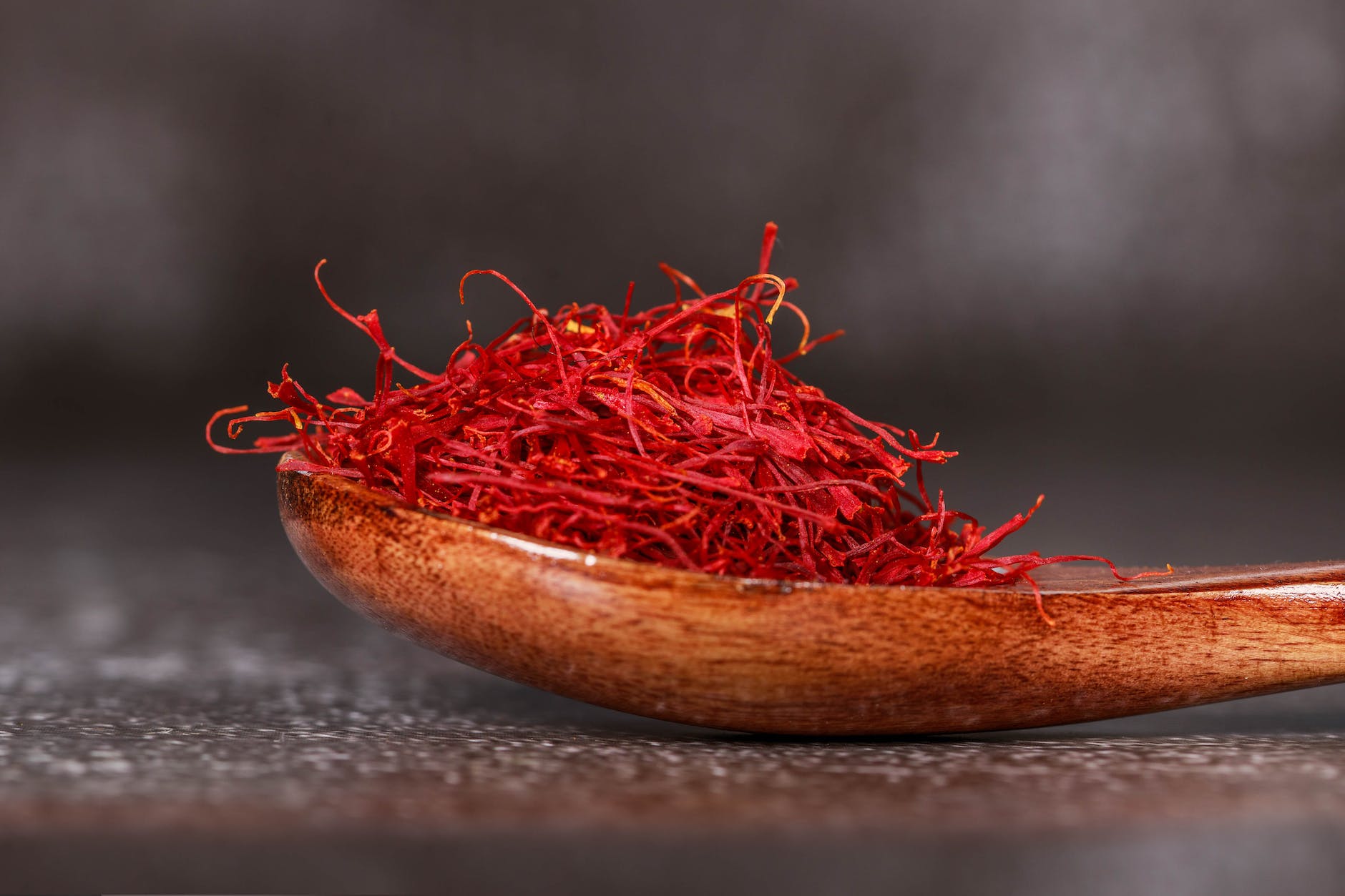
🍽️✨ Saffron, the vibrant and exotic spice, has long captivated chefs and food enthusiasts alike with its distinct flavor, enticing aroma, and rich golden hue. It’s no wonder that saffron is considered the “queen of spices” and a prized ingredient in various cuisines around the world. In this blog post, we will embark on a culinary adventure and explore the unique uses of saffron in cooking. Get ready to elevate your dishes and add a touch of elegance with this exquisite spice. Let’s dive into the world of saffron-infused culinary creations!
1. Saffron in Savory Delights: 🍛 Saffron’s versatility shines in savory dishes, adding a subtle yet distinctive flavor and a beautiful golden hue. In Mediterranean cuisine, saffron is a key ingredient in paella, infusing the rice with its aromatic essence and imparting a vibrant yellow color. In Indian and Persian cuisine, saffron is used in biryanis and pilafs, lending a fragrant and luxurious touch to these rice-based dishes. Saffron also pairs beautifully with seafood, enhancing the natural flavors and creating a harmonious culinary experience. From classic recipes to innovative creations, infusing saffron into your savory dishes can elevate them to a whole new level, tantalizing your taste buds with its unique charm.
2. Sweet Sensations with Saffron: 🍰 Saffron isn’t limited to savory dishes; it also lends its magic to sweet treats and desserts. In Indian cuisine, saffron is a beloved ingredient in milk-based desserts like kheer, where it imparts a delicate floral note and a golden hue to the creamy rice pudding. Saffron is also a favorite in Middle Eastern sweets like baklava and halva, where its aromatic flavor elevates the confections to new heights. Saffron-infused ice creams, cakes, and pastries are other delectable options that allow you to indulge in the sweet side of saffron. The sweet and floral notes of saffron can transform a simple dessert into a culinary masterpiece that will leave your guests in awe.
3. Saffron-Infused Beverages: 🍹 Saffron’s captivating flavor and vibrant color can be embraced in refreshing beverages. Saffron-infused teas, lemonades, or mocktails offer a unique and aromatic experience. The warmth and subtle earthy notes of saffron create a delightful balance with other ingredients, resulting in a refreshing escape from the ordinary. Sip on a cup of saffron-infused tea to enjoy its soothing properties or relish a saffron-infused mocktail as a luxurious and vibrant alternative. These saffron-infused beverages not only quench your thirst but also awaken your senses with their exotic allure.
4. Saffron’s Artistic Touch: 🎨 Saffron not only enhances the taste and aroma of dishes but also adds a visually stunning element to culinary creations. Infusing saffron strands in hot liquid releases its vibrant golden color, transforming dishes into works of art. From delicately sprinkling saffron strands on top of rice dishes to creating intricate patterns on baked goods, saffron allows you to unleash your creativity and make your dishes a feast for the eyes as well. The radiant hues of saffron can turn a simple plate of food into a visual masterpiece, impressing your guests and elevating the overall dining experience.
5. Unconventional Pairings: 🌶️🍫 One of the exciting aspects of saffron is its ability to pair beautifully with both savory and sweet ingredients. Don’t be afraid to experiment with unconventional combinations and discover new flavor profiles. The delicate floral notes of saffron can complement the richness of dark chocolate, creating a harmonious balance of flavors that tantalize the taste buds. Alternatively, saffron can add depth and complexity to spicy dishes, marrying the heat of chili peppers with its warm and earthy undertones. Let your culinary imagination run wild and explore the endless possibilities of saffron in combination with other ingredients.
Conclusion: ✨🍽️ Explore the endless possibilities of saffron in your culinary adventures. From enhancing the flavor and aroma of savory dishes to infusing sweetness and elegance into desserts, saffron elevates your creations to new heights. Whether you’re indulging in a saffron-infused paella, savoring a saffron-scented dessert, sipping on a refreshing saffron-infused beverage, or creating edible masterpieces with saffron’s artistic touch, the versatility of this spice knows no bounds. Let saffron be your culinary companion as you embark on a flavorful journey, unlocking new dimensions of taste and delight.









